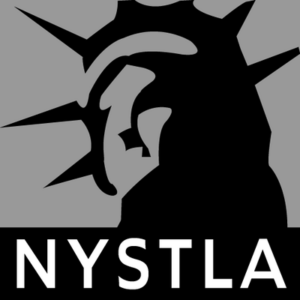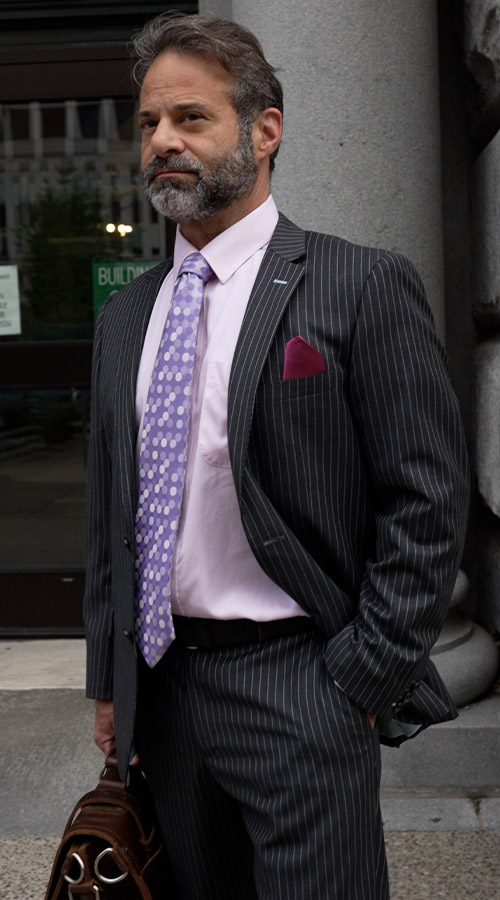Rideshare services such as Uber and Lyft have transformed the way people travel in New York. With the ease of a few taps on a smartphone, individuals can summon a ride, track its arrival, and pay electronically. The convenience and accessibility of these services have led to their widespread adoption across the state. However, the increasing presence of rideshare vehicles on the roads has also raised concerns, particularly when it comes to accidents involving pedestrians. In an urban environment like New York City, where foot traffic is high, the risk of pedestrian-involved accidents is significant. When such accidents occur, they present a unique set of legal challenges that differ from traditional car accidents. These challenges revolve around issues of liability, insurance coverage, and the rights of injured pedestrians. Understanding these legal considerations is crucial for anyone involved in a rideshare accident, whether as a pedestrian, driver, or passenger.
Understanding Rideshare Services and Their Impact on Pedestrian Safety
Rideshare companies like Uber and Lyft operate on a model that connects passengers with drivers through a digital platform. Unlike traditional taxi services, rideshare drivers use their personal vehicles and are considered independent contractors rather than employees of the company. This distinction has significant implications for liability and insurance coverage in the event of an accident. As rideshare services have grown in popularity, so too have concerns about their impact on pedestrian safety. The frequent stops, sudden turns, and constant navigation of urban streets by rideshare drivers can increase the likelihood of accidents. Moreover, the demand for quick pickups and drop-offs in congested areas often leads to unsafe driving practices, such as double parking or stopping in crosswalks. When a pedestrian is struck by a rideshare vehicle, determining who is responsible for the accident can be complex. This complexity is compounded by the fact that rideshare drivers are often in various stages of their work cycle—waiting for a ride request, en route to pick up a passenger, or transporting a passenger—each of which carries different insurance implications.
Determining Liability in Rideshare Pedestrian Accidents
Liability in a rideshare accident involving a pedestrian is not always straightforward. In a traditional car accident, the driver who is at fault is typically held responsible for the damages. However, in the context of a rideshare accident, multiple parties may be involved, including the rideshare driver, the rideshare company, and possibly even the pedestrian. Determining who is liable depends on the specific circumstances of the accident. One of the key factors in determining liability is the status of the rideshare driver at the time of the accident. If the driver was logged into the rideshare app and waiting for a ride request, the rideshare company’s insurance policy typically provides coverage for any accidents that occur. If the driver was en route to pick up a passenger or was actively transporting a passenger, the rideshare company’s insurance policy usually provides higher levels of coverage. However, if the driver was not logged into the app at the time of the accident, the driver’s personal auto insurance policy is typically the primary source of coverage. In cases where the pedestrian’s actions may have contributed to the accident, the issue of comparative negligence may arise. Under New York’s comparative negligence law, the pedestrian’s compensation may be reduced by their percentage of fault in the accident. For example, if a pedestrian was crossing the street against a traffic signal and was struck by a rideshare vehicle, their ability to recover damages may be diminished based on their degree of fault.
Insurance Coverage in Rideshare Pedestrian Accidents
Insurance coverage is a critical consideration in rideshare pedestrian accidents. Rideshare companies like Uber and Lyft are required by New York law to provide specific insurance coverage for their drivers. This coverage varies depending on the driver’s status at the time of the accident. When the driver is logged into the app but has not yet accepted a ride request, the rideshare company’s insurance policy typically includes liability coverage for bodily injury and property damage. This coverage is intended to protect third parties, such as pedestrians, who may be injured in an accident caused by the rideshare driver. However, the coverage limits are generally lower during this period compared to when the driver is actively transporting a passenger. Once the driver has accepted a ride request and is either en route to pick up the passenger or transporting the passenger, the rideshare company’s insurance policy provides significantly higher coverage limits. This coverage includes liability for bodily injury, property damage, and uninsured/underinsured motorist coverage. These higher limits are intended to provide greater protection to both passengers and third parties, such as pedestrians, who may be involved in an accident. If the rideshare driver was not logged into the app at the time of the accident, the driver’s personal auto insurance policy is typically the primary source of coverage. In such cases, the pedestrian may need to pursue a claim against the driver’s personal insurance, which may have lower coverage limits and could potentially lead to disputes over liability and compensation.
Legal Rights of Pedestrians Injured in Rideshare Accidents
Pedestrians who are injured in rideshare accidents have legal rights to pursue compensation for their injuries. In New York, pedestrians who are struck by a vehicle have the right to seek compensation for medical expenses, lost wages, pain and suffering, and other damages resulting from the accident. When the vehicle involved is a rideshare vehicle, the process of seeking compensation can become more complex due to the involvement of multiple insurance policies and potential disputes over liability. Injured pedestrians may pursue a personal injury claim against the rideshare driver, the rideshare company, or both, depending on the circumstances of the accident. If the rideshare driver was at fault and was logged into the app at the time of the accident, the pedestrian may be able to seek compensation through the rideshare company’s insurance policy. However, if the driver was not logged into the app, the pedestrian may need to file a claim against the driver’s personal insurance policy. In cases where the rideshare company’s insurance coverage is insufficient to fully compensate the pedestrian for their injuries, the pedestrian may also have the option to pursue additional compensation through their own uninsured/underinsured motorist coverage. This type of coverage, which is part of many auto insurance policies in New York, can provide additional compensation if the at-fault driver’s insurance limits are inadequate.
Related Videos
How should I choose a personal injury attorney for my claim?
Insurance companies dirty tricks
The Importance of Legal Representation in Rideshare Pedestrian Accidents
Navigating the legal complexities of a rideshare pedestrian accident requires a thorough understanding of New York’s laws, insurance regulations, and the specific dynamics of rideshare services. For pedestrians who have been injured in such an accident, securing legal representation is crucial to ensure their rights are protected and to maximize their chances of receiving fair compensation. An attorney can help injured pedestrians by investigating the accident, determining liability, negotiating with insurance companies, and, if necessary, pursuing litigation. Given the potential for multiple parties to be involved in a rideshare accident, having a legal advocate who understands the nuances of these cases is essential. An experienced attorney can assess the available insurance coverage, gather evidence to support the pedestrian’s claim, and advocate on their behalf throughout the legal process. In addition to navigating the legal and insurance aspects of the case, an attorney can also provide invaluable support to injured pedestrians as they recover from their injuries. This support includes ensuring that the pedestrian receives appropriate medical care, addressing any issues related to lost wages or employment, and providing guidance on how to handle interactions with insurance adjusters and other parties involved in the case.
Statute of Limitations for Rideshare Pedestrian Accident Claims in New York
In New York, pedestrians who are injured in rideshare accidents must be aware of the statute of limitations for filing a personal injury claim. The statute of limitations is the legal deadline by which a claim must be filed. If a claim is not filed within this time frame, the injured party may lose their right to seek compensation. For personal injury claims in New York, including those involving rideshare accidents, the statute of limitations is generally three years from the date of the accident. This means that the injured pedestrian has three years from the date they were struck by the rideshare vehicle to file a lawsuit against the responsible parties. However, there are certain circumstances in which the statute of limitations may be extended or shortened. For example, if the injured pedestrian is a minor at the time of the accident, the statute of limitations may be extended until they reach the age of 18. Additionally, if the claim involves a government entity, such as if the accident occurred due to a hazardous road condition maintained by the city, the injured pedestrian may be subject to a shorter filing deadline and additional procedural requirements.
Seeking Justice and Compensation After a Rideshare Pedestrian Accident
Rideshare accidents involving pedestrians can have devastating consequences, leading to serious injuries, financial hardships, and emotional trauma. Pedestrians who have been injured in such accidents deserve justice and fair compensation for their suffering. Pursuing a personal injury claim is a way to hold the responsible parties accountable and to secure the financial resources needed to recover and rebuild after the accident. The process of seeking compensation can be challenging, particularly when dealing with rideshare companies, insurance providers, and the legal system. However, with the right legal representation, injured pedestrians can navigate these challenges and achieve a favorable outcome. An attorney can provide the knowledge, experience, and advocacy needed to pursue a successful claim and to ensure that the injured pedestrian’s rights are protected throughout the process.
If you or a loved one has been injured in a rideshare accident as a pedestrian in New York, it is essential to take immediate action to protect your rights. The Nicotra Law Firm, PC is dedicated to helping accident victims navigate the complexities of their cases and to pursue the compensation they deserve. Contact our firm today to schedule a consultation and to learn how we can assist you in seeking justice and recovering from your injuries.







